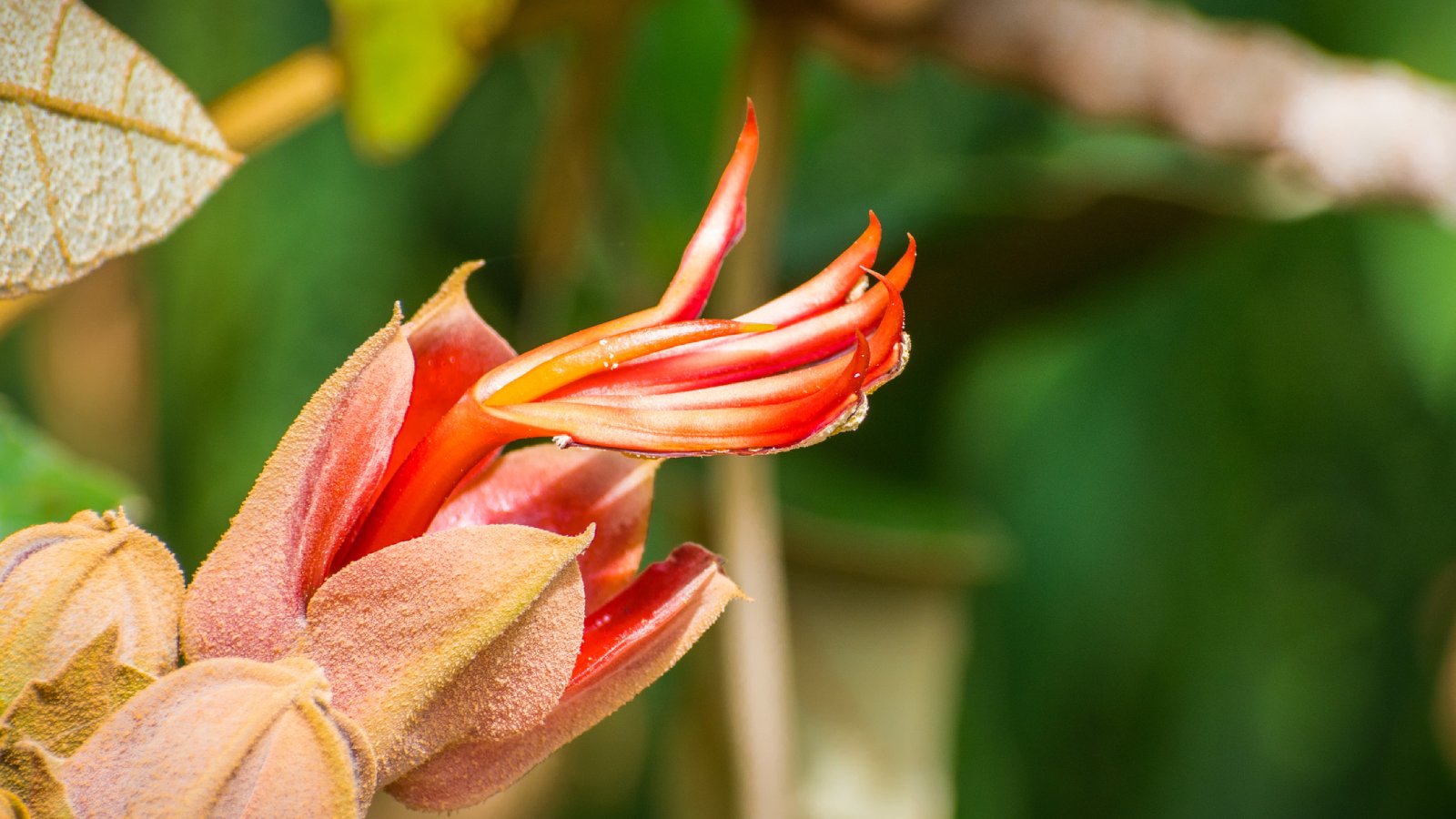How To Grow And Care For A Devil’s Hand Tree
The devil's hand tree can only be grown in locations with hot sun. A little creepy, its flowers resemble a hand, but the tree has many uses in its native range.


Devil's Hand Quick Facts
Botanical name: Chiranthodendron pentadactylon
Height: 40-90 feet (13 - 30 m)
Spread: 20-30 feet (8.6 – 10m)
Sun exposure: Full sun
Soil requirements: Well-draining
Hardiness zones: USDA zones 8 - 12
When to plant: Spring or fall
Monkey’s hand tree (Chiranthodendron pentadactylon) is a handsome broadleaf evergreen tree variety. Its green foliage grows fast and the tree sports flowers, red and brown or maroon, in spring and summer. This easy-care tree – also known as devil’s hand tree – thrives in a dry, full-sun location, like its native range, from Mexico to Honduras.
The monkey hand tree’s flowers are unusual. Each one looks like a red claw – complete with five “fingers,” long red exerted stamens. This explains how the tree gets its common names of monkey hand or devil’s hand tree. The blossoms are sometimes called devil’s hand flowers. They are followed by brown fuzzy, woody fruits about as long as a pointer finger. They split into lobes when they dry.
Devil’s Hand Tree Care
Consider planting this tree if you live where summers are hot. They tolerate heat and cold down to 25 degrees F.
Light
These trees require a full sun location.
Water
This tree has Low water needs. While you should water it deeply when you irrigate, you won’t have to do this too often. Depending on the weather, this should be either occasionally or regularly.
Temperature & Humidity
The tree thrives in USDA zones 9 – 12. They are hardy to 15 degrees F.
Soil
This tree is not picky. It grows just fine in average, well-draining soil.
Gardening tips, videos, info and more delivered right to your inbox!
Sign up for the Gardening Know How newsletter today and receive a free copy of our e-book "How to Grow Delicious Tomatoes".
Fertilizer
You don’t need to fertilize these trees.
Problems, Pests, & Diseases
This scrub tree experiences few pests or diseases in its native range. Grown in cultivation, lack of direct sun can result in poor growth. The monkey hand tree simply won’t tolerate shade.
Pruning
Just prune out dead, dying, or broken branches.
Propagation
These trees grow from seeds from the fruit that develops after the tree flowers.
Repotting
These trees are a little large to grow in containers. However, if you do, expect to repot them regularly. They can grow as fast as 36 inches (.9 m) a year.
Devil's Hand Tree Uses
The chocolate and red blossoms of this scrub tree and the resulting fruit are the parts that are used in its native range. In traditional medicine in Mexico, the flowers and fruits are used – together with other medicinal plants – for a wide range of health issues. These health issues include nervousness, epilepsy, headaches, insomnia, heart problems, diarrhea, depression, dizziness, pain, inflammation and ulcers. Made into a decoction, the flowers are used as an external wash for hemorrhoids.
In addition, the bark is used to make rope. The large leaves are traditionally used to wrap food.

Teo Spengler is a master gardener and a docent at the San Francisco Botanical Garden, where she hosts public tours. She has studied horticulture and written about nature, trees, plants, and gardening for more than two decades. Her extended family includes some 30 houseplants and hundreds of outdoor plants, including 250 trees, which are her main passion. Spengler currently splits her life between San Francisco and the French Basque Country, though she was raised in Alaska, giving her experience of gardening in a range of climates.